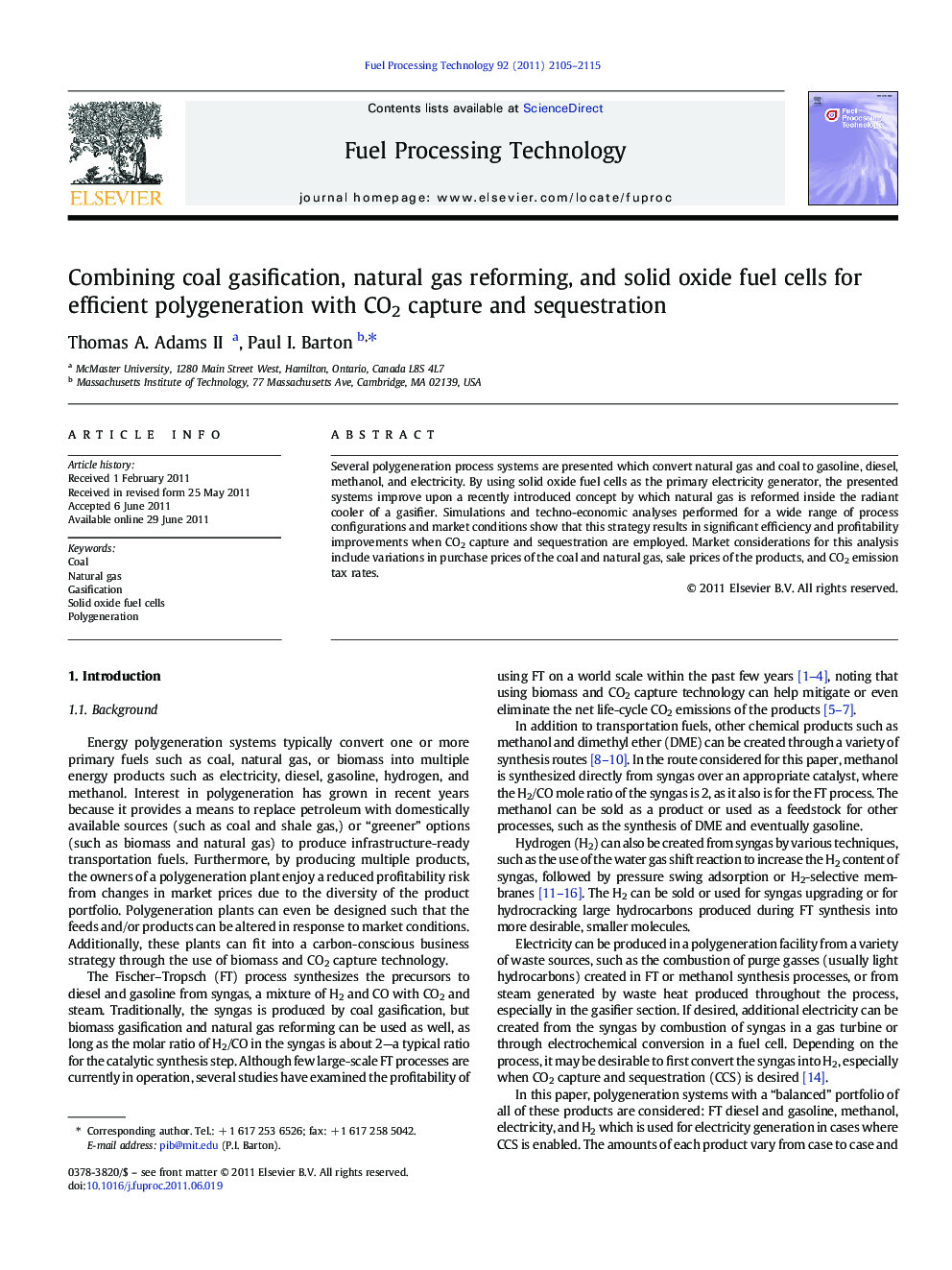| Article ID | Journal | Published Year | Pages | File Type |
|---|---|---|---|---|
| 210598 | Fuel Processing Technology | 2011 | 11 Pages |
Several polygeneration process systems are presented which convert natural gas and coal to gasoline, diesel, methanol, and electricity. By using solid oxide fuel cells as the primary electricity generator, the presented systems improve upon a recently introduced concept by which natural gas is reformed inside the radiant cooler of a gasifier. Simulations and techno-economic analyses performed for a wide range of process configurations and market conditions show that this strategy results in significant efficiency and profitability improvements when CO2 capture and sequestration are employed. Market considerations for this analysis include variations in purchase prices of the coal and natural gas, sale prices of the products, and CO2 emission tax rates.
Graphical abstractOptimal design choice as a function of CO2 tax and electricity sale price. Fuel and product prices are at base case values. Design choices include “Coal Only”, “External Reforming” and “Internal Reforming”; Gas Turbines or SOFCs; with or without Cabon Capture and Sequestration, and the amount of liquid fuels or electricity produced, expressed as a percentage of the output.Figure optionsDownload full-size imageDownload as PowerPoint slideResearch highlights► Techno-economic analysis of 80 polygeneration system configurations. ► Natural gas is reformed in the radiant cooler of a coal gasifier. ► Solid oxide fuel cells (SOFCs) are used for power. ► Diesel, gasoline, and methanol are also produced. ► Market analysis considers price fluctuations and determination of optimal design.
